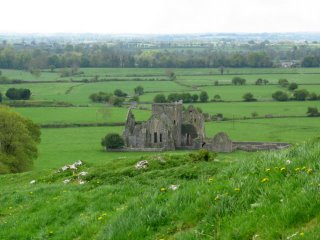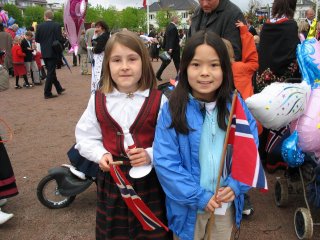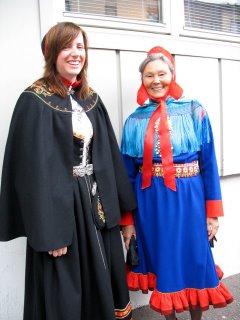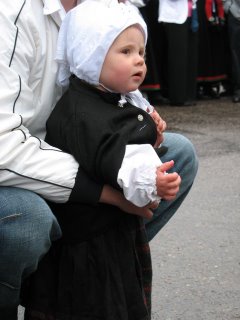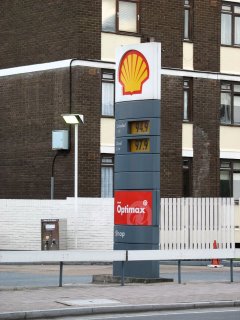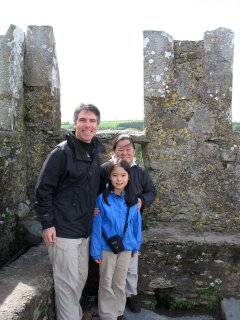
The rainbow stretching over the parking lot of the tiny Kerry airport was an auspicious omen for our arrival to Ireland. I told Dylan that we should watch out for the leprechauns guarding the pot of gold at the end of the rainbow, but after the incident with the hamsters (or lack thereof) in Amsterdam, she wasn’t in a mood to believe me. We did find the gold, however, but it took a few days.
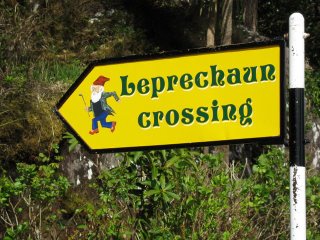
We decided to “go rural” in Ireland and rent a car so that we could travel at our own pace and not be on one of those huge bus tours through the Ring of Kerry and the Dingle Peninsula.

From Killarney we drove to Cork to kiss the Blarney Stone,

and then to Kilkenny before stopping in Dublin for a few days.
Although Ireland has been on the top ten list of countries I’ve wanted to see, there weren’t specific castles or historical sites beckoning me. I wasn’t even sure what the Ring of Kerry or the Dingle Peninsula offered the explorer. But what I saw kept me saying to Andy that this Ireland wasn’t what I was expecting, and he wanted to know what it was I had hoped to see in Ireland.
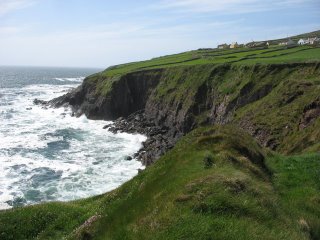
It wasn’t a thing, you see, but a feeling. I was looking for the Ireland of tragic angst. The Ireland of gray rainy days, ducking into a pub with your mates and hearing a band like the Chieftains merrily playing along. I was looking for the poor but scenic Ireland with tiny ramshackle houses, recently left by immigrants to the New World as they sought their fortune. I was expecting to see the Irish of the famine, with cheeks hollow and bodies bent from hard work and hunger. Not really the last one, but this was not the Ireland that Michael Collins, James Joyce, or even Van Morrison led me to believe existed.

No, this Ireland was filled with hundreds of new homes in every town, folks driving Mercedes Benzes and other fancy cars, and the girls were more than well-fed, more often than not sporting muffin tops dangling over their low-rise jeans.
Since the 1990’s when the economic powers of the Celtic Tiger became evident, Ireland has seen a surge in immigration, employment (it has one of the lowest unemployment rates in Europe) and development, which in turn feed the economy. In Ireland it is now possible to get a Mexican dinner in Cork and a Vietnamese meal in Dublin. We know, because we’ve had both!
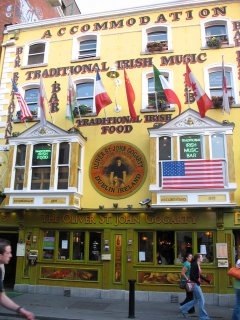
We weren’t sure we were gauging the mood in Ireland correctly, but actually in
The World Is Flat,
Tom Friedman says that “Ireland today is the richest country in the European Union after Luxembourg. Ireland has a per capita GDP higher than that of Germany, France and Britain. Today nine of the world’s ten top pharmaceutical companies have operations in Ireland, as do sixteen of the top twenty medical device companies and seven of the top ten software firms.”
Believe it or not, Ireland had more foreign investment in 2004 from America than China did! Dell computers are the largest export from Ireland and Ireland hopes to double the number of PhDs in science and engineering by 2010. Even
Subway sandwiches has lofty goals and hopes to have 2010 Subway franchises open in Ireland by 2010, a dubious side effect of all this development. The gold was at the end of the rainbow, but it wasn’t in a black pot, but scattered all over the country, as they scurry to modernize, develop and ride this Celtic tiger to its next stop.
It took a little more digging than I thought it would to find the Irish of yesterday, or more accurately the Ireland of
Guinness advertisements.

Arriving in Dublin in a blinding rainstorm, we heard a radio report that Ireland has an unusually high number of suicides, so there must be some amount of angst. The news of the number of road fatalities that weekend was given in an Irish lilt, and we did eat soda bread, stew and boxty, a dish developed as a result of the famine, where scarce potatoes were grated and filled like a crepe, but with filling meats for us rather than the nettles which might have been served during the mid-1800s.
We’re learning that it’s painful to have too many expectations when we travel to another country. That traveling through a different land usually does not mean time traveling, and that the place you were inspired to visit because of the novels, music or history often does not match up to the modern reality. And why should it? Kipling’s India, Dickens’ London, and Laura Ingalls Wilder’s Minnesota just don’t exist like they did. Time marches on, but I can’t help to feel that something is being lost in the quest for globalization, because if Tom Friedman is correct and the world is becoming flat, then doesn’t that mean that it is also becoming homogenized? Or as
Joni Mitchell sang, “They paved paradise and put up a parking lot.” Perhaps for centuries travel writers have been bemoaning the march of progress in such scenic places as Ireland, while embracing the tools (jet travel and email are great). But for now we say, get yourself out there, and see the windswept coasts, the emerald green fields, and the ragged rock walls before they become somehow changed, like the other parts of Ireland we fear that we missed.
